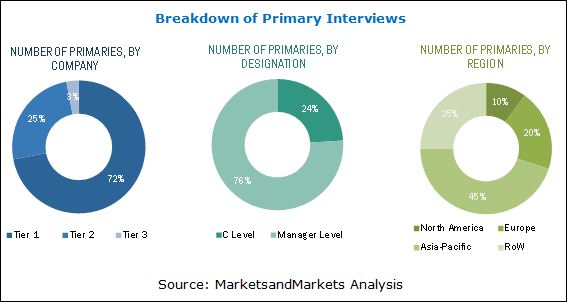
The small-scale LNG market is projected to grow from 262.38 Million tons per annum in 2016 to 299.15 Million metric tons per annum by 2021, at a CAGR of 2.7% in terms of volume. Increasing demand for liquefied natural gas (LNG) from remote locations for use in power generation plants and heavy duty transport, and global commoditization of liquefied natural gas (LNG) are the major factors driving the demand for liquefied natural gas (LNG) from small-scale regasification terminals.
Download PDF Brochure @ https://www.marketsandmarkets.com/pdfdownloadNew.asp?id=226707057
The development of downstream infrastructure and logistics, remote regasification terminals, trucking stations, and liquefied natural gas (LNG) bunkering, among others are some other factors expected to fuel the growth of the small-scale LNG market.
Growth Drivers:
- Energy cost advantage of LNG over alternate energy sources for end users
- Environmental benefits
- Fiscal regime and subsidies
Energy cost advantage of LNG over alternate energy sources for end-users
Heavy duty transport companies save approximately 30% on fuel costs on LNG-fueled trucks, compared to diesel fueled trucks, and produce 30% lower emissions. Air pollution from diesel engines is one of the biggest concerns, especially in areas that struggle to meet air-quality standards. On the other hand, natural gas causes complete combustion and fewer emissions than diesel. It is estimated that increasing environmental concerns from the utilization of diesel vehicles is likely to increase the adoption of green fuel technologies such as natural gas. In the case of electric power generation, natural gas engines below 150 KW are more cost effective than oil fueled engines.
Fuel cost is one of the major cost for road transportation, which is strongly subject to excise taxation. Typically, an LNG-fueled Volvo FM truck can travel up to 600 km with LNG. With an additional 150 litres of diesel, it can travel up to 1,000 km without refuelling. Thus, reducing the cost of travel. With additional LNG liquefaction capacity expected to come online in the next few years, an oversupply of LNG is expected, which will drive the price of LNG further lower. Considering all these factors, both developed and developing countries are undertaking feasibility studies to recognize the techno-economics of shifting their economies from diesel to natural gas. Therefore, the cheap price of small-scla LNG over others alterantive fuels will drive the growth during the forecast period.
Major players operating in the small-scale LNG market are Linde AG (Germany), Wärtsilä (Finland), Honeywell International Inc(US), General Electric (US), ENGIE (France), IHI Corporation (Japan), Gazprom (Russia), Skangass AS (Norway), Sofregaz (France), Dresser-Rand (US), Prometheus Energy Company (US), PLUM ENERGY (US), Excelerate Energy. L. P. (US), and Cryostar SAS (France).
Major Market Developments
- In December 2016, SkanGas AS signed an agreement with Statoil ASA, an oil and gas company in Norway for the reloading of small-scale LNG at Klaipeda LNG Terminal in Lithuania
- In November 2016, Wärtsilä signed a Memorandum of Understanding (MoU) with ENGIE, a French multinational company to develop services and solutions in the small-scale LNG sector. The agreement includes LNG distribution in remote areas and islands, LNG for ships, small-scale LNG and bio-liquefaction, and LNG to power stations
- In October 2016, GAZPROM announced to develop a program for a small-scale LNG production, which includes a list of gas distribution stations and liquefaction technologies for LNG production. The program involves the construction of mobile LNG filling stations and cryogenic filling facilities.
- In June 2014, The Linde Group developed a small-scale LNG technology namely StarLNG™ for the integration into natural gas liquids (NGL) plants. Some of the benefits of this technology includes zero impact on the reliability of the NGL plant production and monetizing the stream of the residue gas through small-scale LNG.
Speak to our analyst for a discussion on the above findings @
https://www.marketsandmarkets.com/speaktoanalystNew.asp?id=226707057

